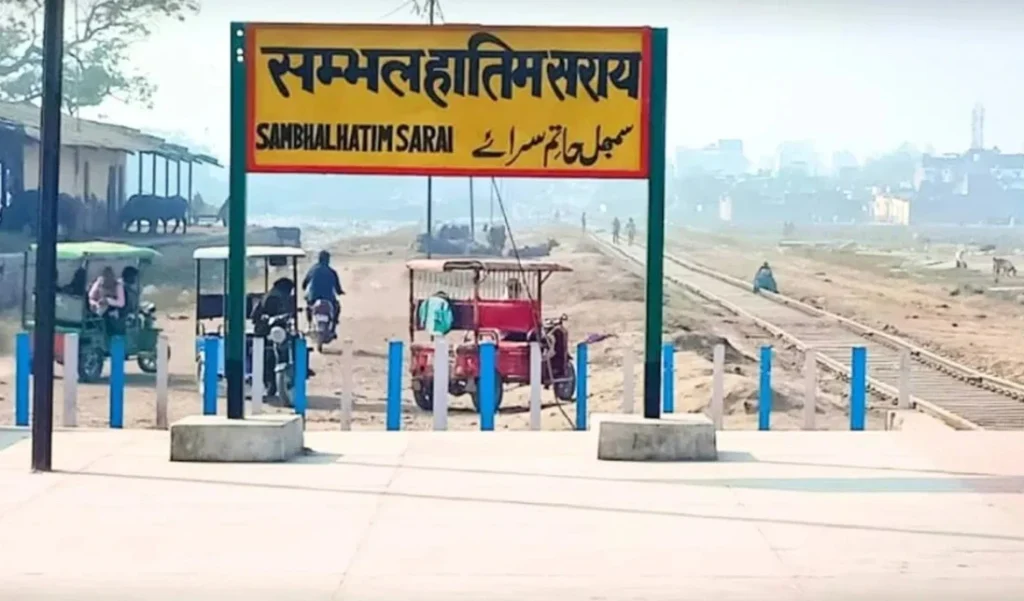Explore Sambhal District, Uttar Pradesh, known for its rich history, vibrant culture, and traditional handicrafts. Discover ancient temples, bustling markets, and serene landscapes.

Explore Sambhal: Ancient Temples & Vibrant Traditions
Sambhal District, located in the northern Indian state of Uttar Pradesh, is a region steeped in history and culture. With a rich heritage and a blend of urban and rural landscapes, Sambhal District offers a glimpse into the diversity and vibrancy of India.
Covering an area of approximately 2,928 square kilometers, Sambhal District is home to a diverse population that includes various religious, linguistic, and ethnic groups. The district’s administrative center is the town of Sambhall, which has its own historical significance dating back to ancient times. The district is divided into several administrative blocks, each with its own unique characteristics and contributions to the district’s development.
One of the notable features of Sambhal District is its skilled craftsmanship in the field of metalwork and handicrafts. The region is famous for its brass and metal industry, producing intricately designed artifacts that are not only popular locally, but also find their way to international markets. The artisans of Sambhal are known for their impeccable craftsmanship, passed down through generations, making this district a hub for artistry and trade.
Sambhall District also has a strong agricultural base, with fertile lands that support the cultivation of crops like wheat, sugarcane, and vegetables. The district’s economy is closely tied to agriculture, providing livelihoods to a significant portion of the population. In recent years, efforts have been made to modernize agricultural practices through technological interventions and improved irrigation methods.
The district’s cultural landscape is marked by a harmonious coexistence of various communities. Festivals like Eid, Diwali, Holi, and Navratri are celebrated with fervor, bringing together people from different backgrounds to partake in the festivities. This cultural amalgamation is also reflected in the local cuisine, which offers a delectable fusion of flavors and dishes.
Education and healthcare are integral aspects of any thriving community, and Sambhal District is no exception. The district has seen improvements in both these sectors, with the establishment of schools, colleges, and healthcare centers. This has contributed to an enhanced quality of life and increased opportunities for the residents.
As with any region, Sambhal District also faces its share of challenges. Infrastructure development, employment opportunities, and environmental sustainability remain areas that require attention and investment. Efforts are being made by the local administration and community leaders to address these issues and pave the way for a more prosperous future.
Famous Places in Sambhal District
Sambhal District boasts several renowned destinations that reflect its cultural heritage and historical significance. From ancient sites to modern marvels, here are some famous places worth exploring:
Sambhal Town: The district’s administrative hub, Sambhal Town, has a history that dates back centuries. Known for its bustling markets, historic structures, and cultural events, the town offers a glimpse into the district’s past and present.
Chandausi: A prominent town in Sambhal District, Chandausi is known for its production of ‘Ittar’ (traditional perfumes). The town also houses ancient temples and monuments, providing insights into its historical importance.
Brass Artifacts Market: Sambhal is renowned for its intricate brass and metalwork. The brass artifacts market showcases the skilled craftsmanship of local artisans, offering visitors a chance to purchase unique handcrafted items.
Ruins of Kant: The ruins of Kant, an archaeological site, reveal the remnants of an ancient settlement. The site’s historical value and architectural remains provide a window into the past, attracting history enthusiasts.
Aqsa Masjid: Aqsa Masjid is a prominent mosque in Sambhal known for its exquisite architecture and religious significance. It stands as a symbol of the district’s cultural diversity and religious harmony.
Sambhal Sarai: This historical sarai (rest house) is a testimony to the region’s historical importance as a trading hub during the Mughal era. The architectural features and layout of the sarai offer insights into the past.
Bilari: Known for its old fort and ancient temples, Bilari is a town that holds archaeological and religious significance. The town’s structures reflect a blend of architectural styles from different periods.
Hakim Karam Husain Museum: This museum is dedicated to the renowned Hakim Karam Husain, an influential freedom fighter and educationist. The museum houses artifacts, documents, and memorabilia related to his life and contributions.
Shri Siddh Baba Temple, Gunnaur: This revered temple is a major religious attraction in the district, drawing devotees seeking blessings and solace. The temple’s serene surroundings make it a peaceful destination for spiritual seekers.
Kazipura Shah Wilayat Dargah: A significant spiritual center, the Dargah is dedicated to Hazrat Shah Wilayat, a revered Sufi saint. Pilgrims visit the Dargah to seek blessings and experience the tranquility of the premises.
These are just a few of the many remarkable places that define Sambhal District’s cultural tapestry and historical legacy. Each destination offers a unique perspective on the district’s history, traditions, and contributions to India’s diverse landscape.
Read More :-